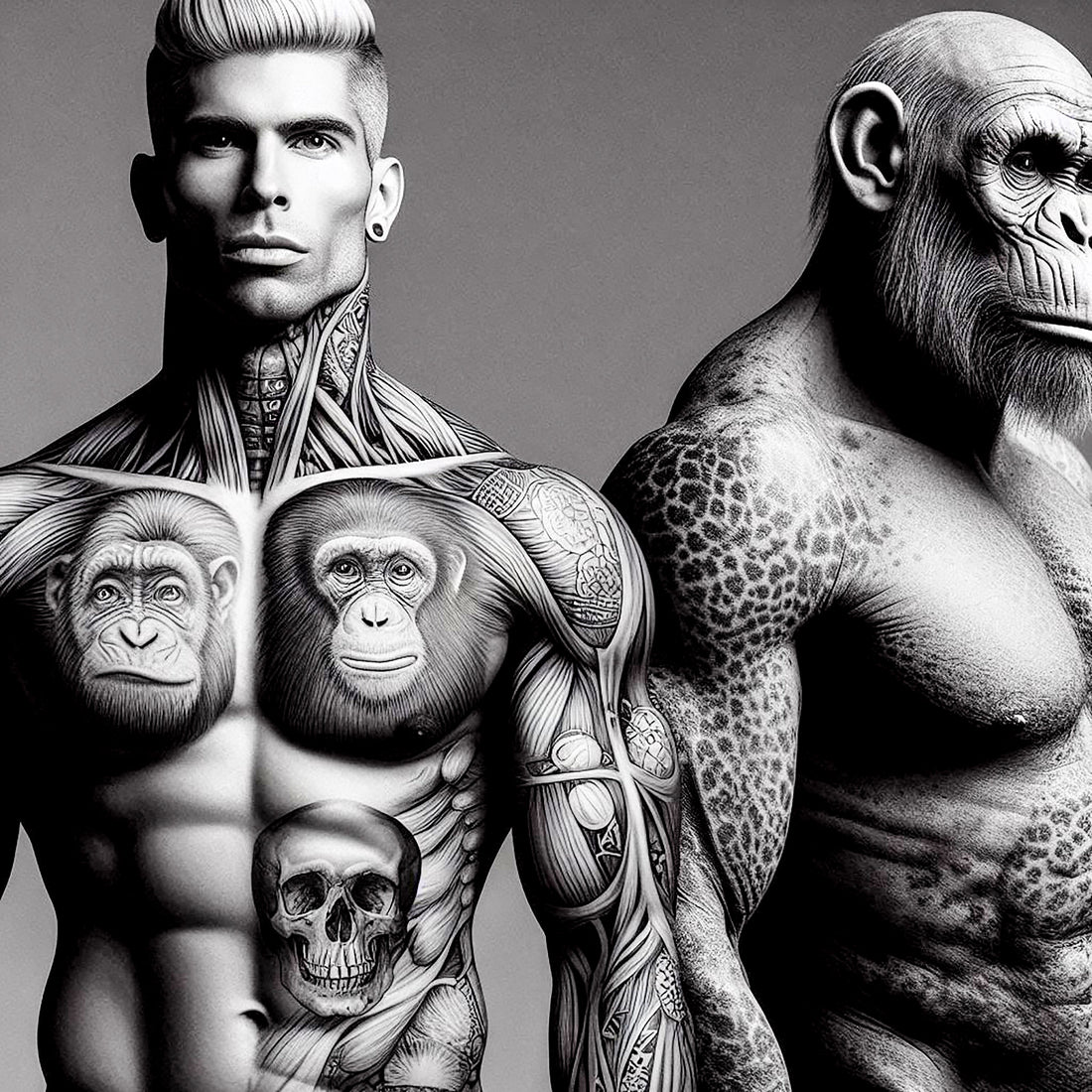
Homo Sapiens
Share
Origins and Evolution:
• Early Origins: Fossil and genetic evidence traces Homo sapiens’ origin to East Africa. The species gradually spread across the globe, replacing or interbreeding with other hominin species like Neanderthals and Denisovans.
• Anatomical Changes: As Homo sapiens evolved, physical features adapted to accommodate complex brain function, including a rounded skull, reduced brow ridge, and smaller teeth.
• Out of Africa Theory: It’s widely accepted that modern humans migrated out of Africa in several waves, starting around 60,000–70,000 years ago, populating Europe, Asia, Australia, and eventually the Americas.
Physical Characteristics:
• Brain and Skull: Homo sapiens have a large brain relative to body size, averaging about 1,300–1,500 cubic centimeters. The skull is rounded, with a high forehead and reduced brow ridge compared to earlier hominins.
• Body Structure: Humans are bipedal, meaning they walk on two legs, with an upright posture. This adaptation freed the hands for complex tool use, social gestures, and carrying objects.
• Face and Teeth: Humans have relatively small teeth and a prominent chin, distinguishing them from earlier hominins.
Behavior and Social Structure:
• Language and Communication: Language, both spoken and written, is one of the most defining traits of Homo sapiens, enabling complex communication, culture, and social organization. Language has allowed humans to pass knowledge across generations and build civilizations.
• Social Complexity: Humans are highly social, forming communities, tribes, nations, and other organized societies. Social bonds and cooperative behaviors have played a vital role in human survival and success.
• Culture and Art: Homo sapiens began creating art, music, and symbolic objects tens of thousands of years ago, leaving behind cave paintings, carvings, and burial sites. Culture, mythology, and religion have been key aspects of human identity across civilizations.
Cognition and Tool Use:
• Abstract Thought: Homo sapiens demonstrate advanced cognitive abilities, including abstract reasoning, problem-solving, and long-term planning.
• Tools and Technology: From simple stone tools to advanced machinery, humans have continually developed technology. Early humans crafted stone tools and used fire, while modern humans have developed agriculture, writing, and digital technology.
• Scientific Curiosity: Curiosity and the pursuit of knowledge have led to remarkable scientific advances in fields like medicine, physics, and engineering, transforming human life and our understanding of the universe.
Impact on the Environment:
Diversity and Adaptability:
• Genetic Variation: Humans are highly diverse, with significant genetic, linguistic, and cultural variation across populations. This diversity has allowed Homo sapiens to adapt to various environments, from arctic tundras to tropical rainforests.
• Cultural Adaptation: Cultural practices and technologies, such as clothing, shelter, and medicine, have allowed humans to survive in environments they aren’t biologically adapted to.
Unique Traits and Contributions:
• Self-Awareness and Reflection: Homo sapiens are unique in their ability to reflect on their existence, question their purpose, and create elaborate belief systems and philosophies.
• Moral and Ethical Systems: Humans have developed complex ethical frameworks, religions, and systems of law to govern behavior and foster cooperation.
• Exploration and Innovation: From space exploration to digital innovation, Homo sapiens continually push boundaries, seeking to understand and expand beyond their immediate surroundings.
Summary:
CyberMutz.com (Dog-Themed Apparel & Accessories)
“CyberMutz.com – Explore a unique collection of dog-themed apparel, accessories, and gifts for pet lovers. Shop stylish, high-quality designs featuring your favorite dog breeds!” Category Page Descriptions: Dog Breed T-Shirts: “Show off your love for dogs with our exclusive breed-themed T-shirts. From German Shepherds to Chihuahuas, find high-quality, comfortable tees celebrating your favorite pup!” Dog Breed Pet Tank Tops: “Keep your furry friend stylish and comfortable with our dog breed-themed pet tank tops. Perfect for small and large dogs, these unique designs are a must-have!” Funny Dog-Themed Apparel: “Love dogs and humor? Our funny dog-themed apparel blends style with witty canine-inspired designs. Shop now for T-shirts, hoodies, and more!” Personalized Dog Merchandise: “Customize your dog lover’s gear with our personalized pet-themed apparel and accessories. Create a one-of-a-kind look for yourself or a perfect gift for a fellow dog enthusiast!”
CyberPussyKatz.com (Cat-Themed Apparel & Accessories)
“CyberPussyKatz.com – Celebrate your love for cats with our premium collection of feline-inspired apparel and accessories. Purr-fect designs for every cat lover!” Category Page Descriptions: Cat Breed T-Shirts: “Showcase your favorite feline friend with our stylish cat breed-themed T-shirts. From Maine Coons to Siamese, find the perfect tee for cat lovers!” Funny Cat-Themed Apparel: “Express your quirky side with our funny cat-themed T-shirts, hoodies, and more. Pawsome designs for those who love cats and humor!” Personalized Cat Merchandise: “Make it personal with custom cat-themed apparel and accessories. Create a unique gift or a special piece just for you!”
CyberMunkiez.com (Monkey-Themed Apparel & Accessories)
“CyberMunkiez.com – A fun collection of monkey-inspired apparel and accessories. Perfect for primate lovers who enjoy bold, playful, and unique designs!” Category Page Descriptions: Monkey-Themed T-Shirts: “Go bananas over our monkey-themed T-shirts! Whether you love capuchins, chimps, or gorillas, our designs bring out your wild side.” Funny Primate Apparel: “Add a touch of humor to your wardrobe with our hilarious monkey and ape-inspired apparel. Great for animal lovers and jungle enthusiasts!” Custom Monkey Merchandise: “Make it yours! Personalize your favorite monkey designs on T-shirts, hoodies, and more for a one-of-a-kind look.”
